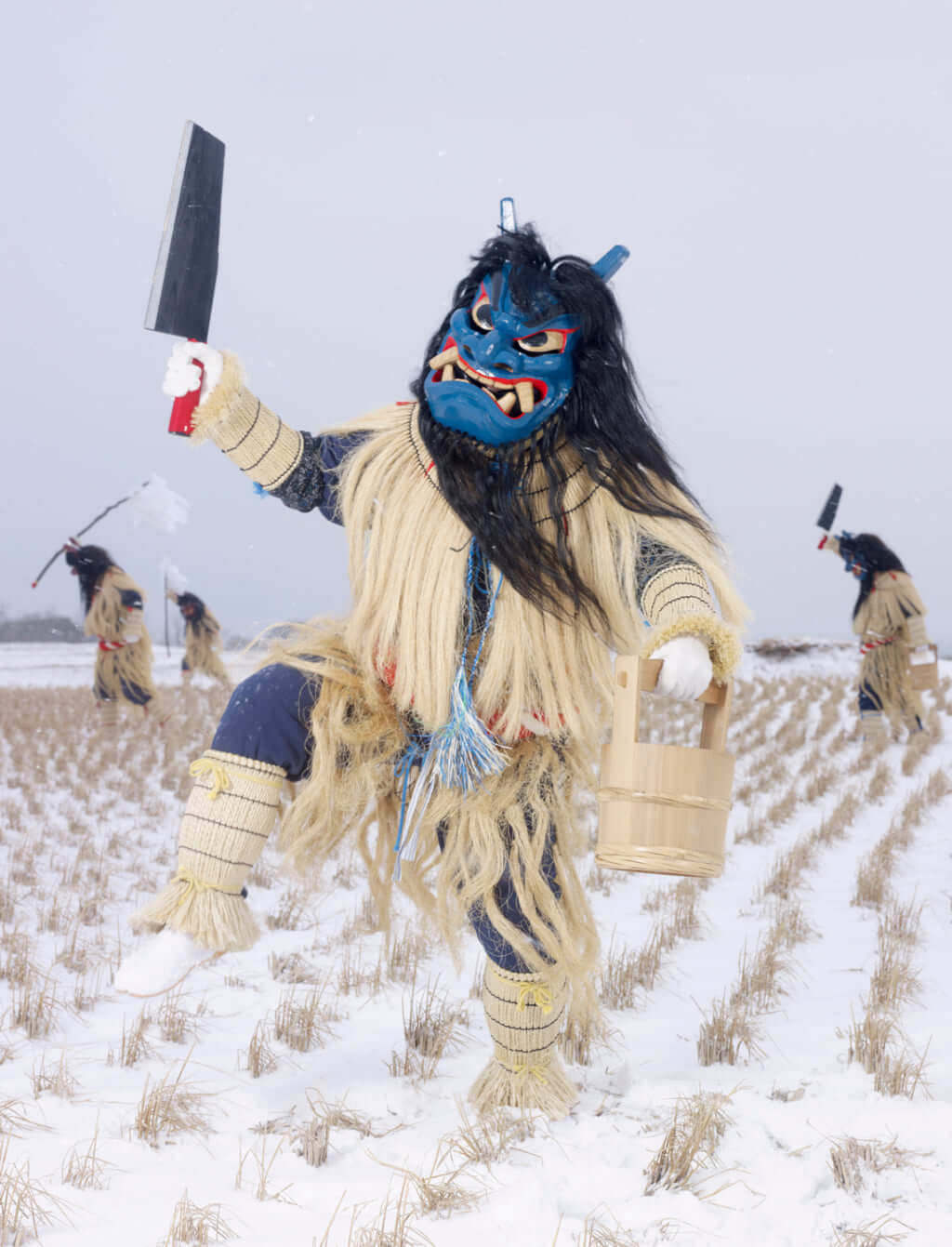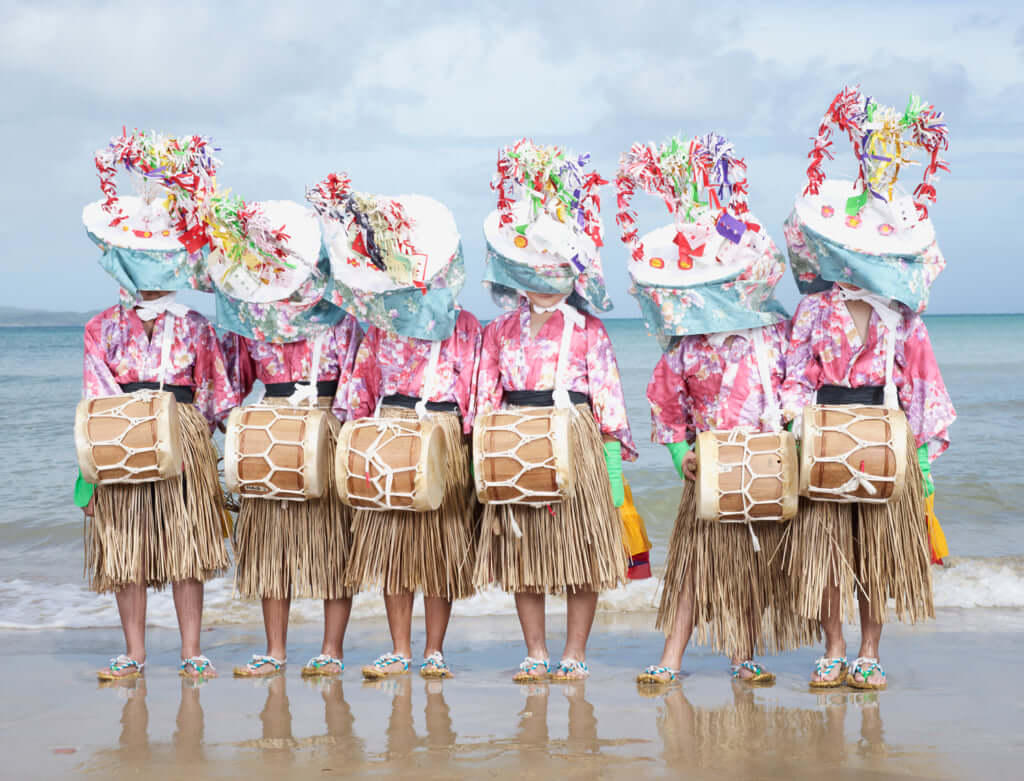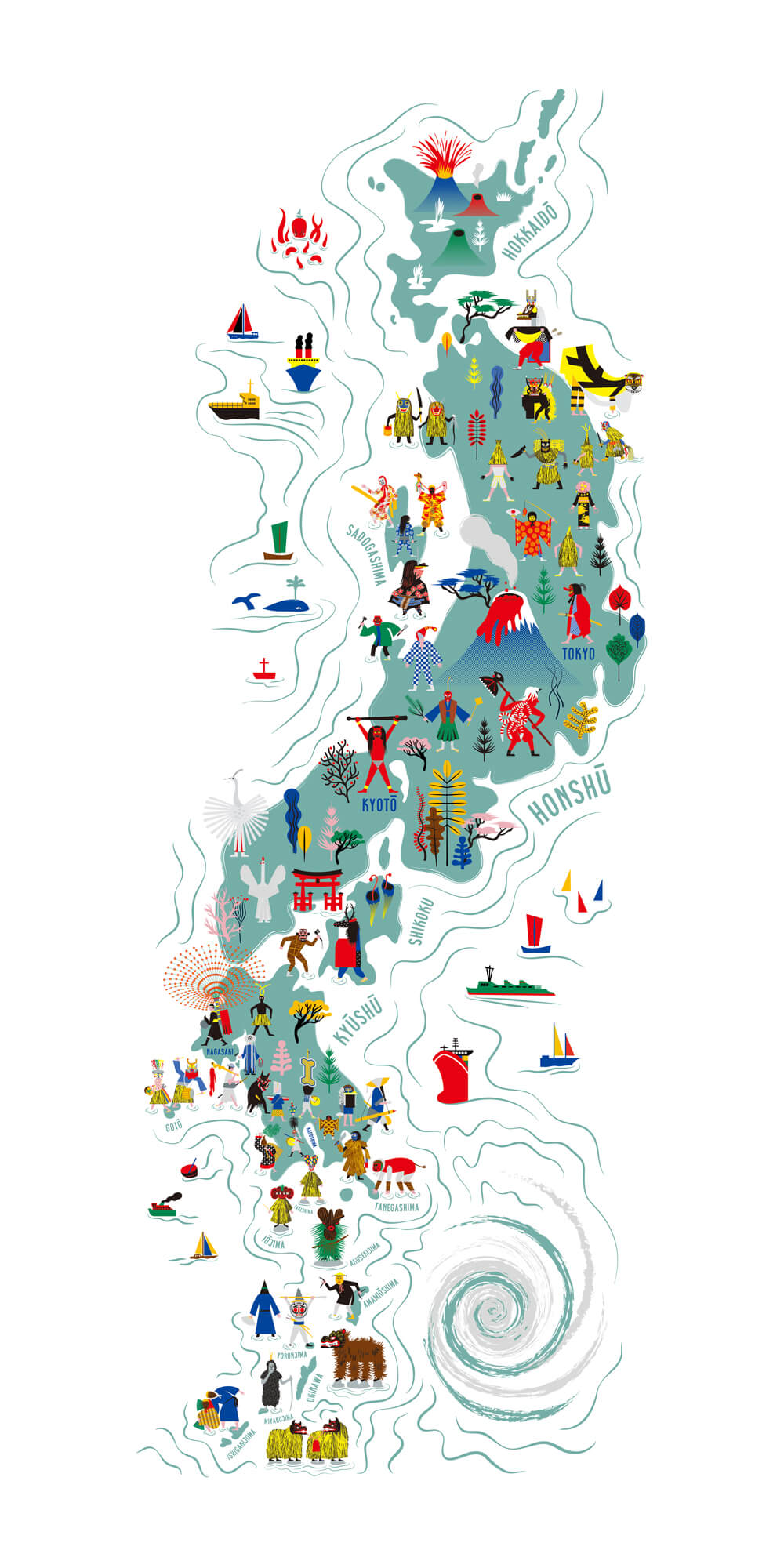Japanese Demons Take a Tangible Form Through Charles Fréger’s Lens

Terrifying, masked figures with contorted features pose, often armed, looking ready to attack! In front of French photographer Charles Fréger‘s camera, mythical creatures from Japanese folklore come to life in all their eccentricity.
Familiar with Japan after having photographed sumo wrestlers in the early 2000s, Charles Fréger returned to the country in 2013 with the desire to tackle its rural environment. Over the course of five trips and visiting multiple rural locations and islands, he became familiar with the local legends, which he incarnated through the residents.
Some demons, or Yokai, have an animal’s head, for example a menacing stag with its mouth and inner ears painted red, or a crouching, mischievous monkey which does not exactly inspire confidence. Others have vaguely human faces, but are no more reassuring. Some don’t even have a face at all, and are instead masked by a hood or scarf.
These costumes, still used as part of seasonal rituals and masquerades, pay homage to Nature and the elements in order to attract good omens and keep disaster at bay. Only certain people are able to wear them, and Charles Fréger obeyed this rule by only photographing those who are authorised to wear them during ceremony periods. However, he made the deliberate decision not to photograph them during the rituals, and instead took more interest in the relationship between the individual and the costume and the role that the costume plays.
Based on his encounters with the Yokai, Charles Fréger has compiled a series of photographs entitled ‘Yokainoshima’, or the island of monsters. The Yokai are fantastical creatures which recur frequently in Japanese legends. They are malicious, not to mention devilish, and parents often appeal to some of the best known when wanting to scare their children. The children therefore know that they should be wary of kappas, tortoises in human form which carry a small dish full of water on their head. To avoid being eaten alive, you simply need to greet them by bowing down low, because kappas are very polite and respond to the greeting by releasing some of the precious liquid that is vital to their survival…
Not all of the Yokai are equally well known. Every region in Japan has its own bestiary, such as Amemasu, the fish from Hokkaido, or Tearai Oni (the handwashing demon) which inhabits the island of Shikoku and the Seto Inland Sea.
For those who wish to gain a better understanding of their diversity and origins, the Musée des Confluences in Lyon is currently bringing together its own Japanese collections and some pieces from Paris’s Musée Guimet and Charles Fréger’s photographs. The latter have been compiled in the book Yokainoshima – Island of Monsters, published by Actes Sud and with an introduction written by Ryoko Sekiguchi.


Graphic figures designed by Golden Cosmos studio for Charles Fréger's book Yokainoshima, Island of Monsters (2016) © Golden Cosmos. Map designed specifically for the exhibition at Musée des Confluences
TRENDING
-
Yakumo Saryo: A Culinary Voyage in Tokyo
Shinichiro Ogata makes objects from glass, ceramics and bronze but is also a fantastic cook. Have a taste of both his talents at restaurant Yakumo Saryo.

-
WA BI GIN : (An Old) Affair of Passion
The Japanese distillery Hombo Shuzo, first known for their shoshu, decided to launch itself into artisanal production of gin. Thus, WA BI GIN was born.

-
Gome Pit, the Pop-Up Bar in a Waste Treatment Facility
Japan never ceases to surprise. Gome Pit is a pop-up bar with an unobstructed view over a pit where tonnes of waste are piled up before being incinerated.

-
A Japanese Tea Room Perched Atop a Rooftop
The building, in keeping with the minimalist style of its creator, offers a splendid view of Vancouver Bay and the surrounding mountains.

-
Discover Japanese Gastronomy Through The Solitary Gourmet Manga
This illustrated black and white album follows its lead through various bars, celebrating the Japanese art of living.





